Getting Around in Venice: How to Navigate the City of Water
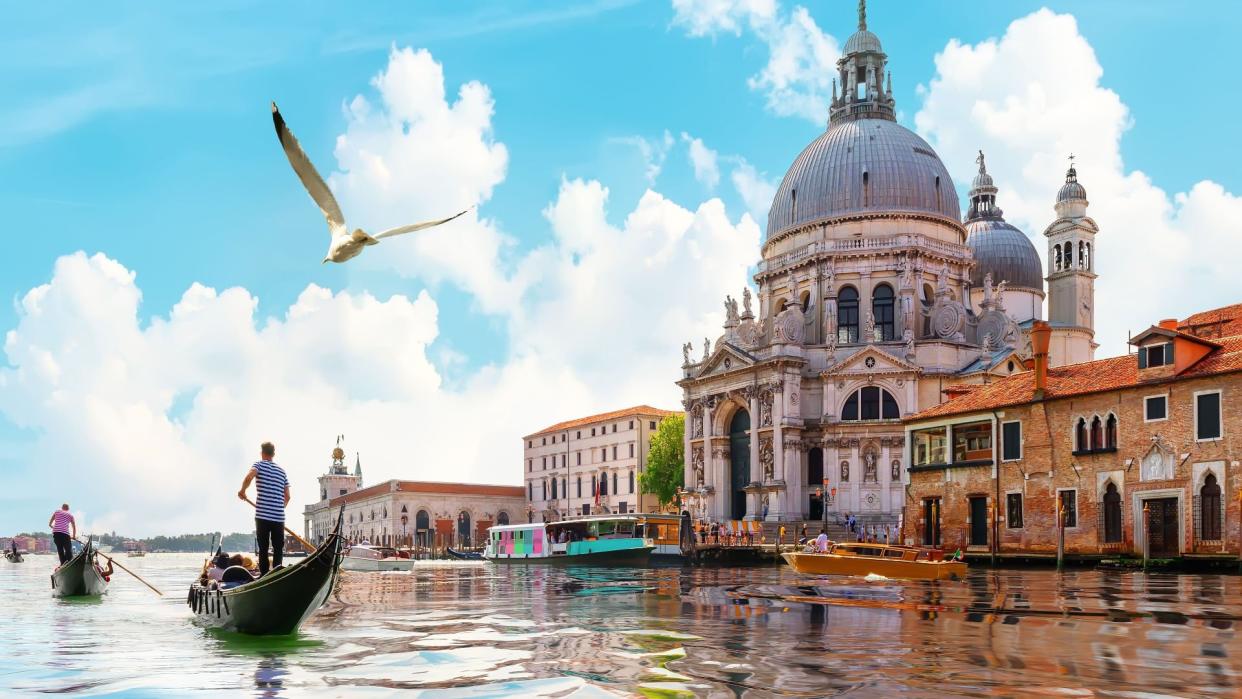
This post may contain affiliate links. If you use these links, we may earn a small commission. Thanks for your support.
From Piazza San Marco to the famous bridges and gondola rides on the Grand Canal—there’s so much to do in Venice. There are the relatively inexpensive ferries, pricy water taxis, and gondolas taking you through winding canals for a tidy little sum. But what is the best way to navigate this wonderland of alleys, channels, and Gothic landmarks? Getting around in Venice can be easy and affordable if you do it right. Here’s how…
Vaporetto: The cheapest option for longer distances
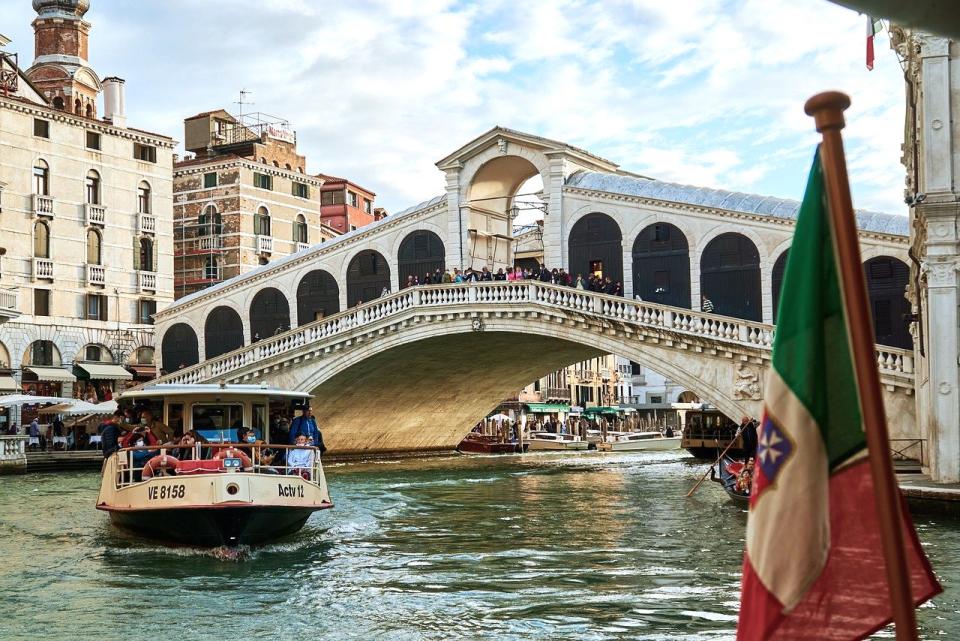
A vaporetto is a steam-powered passenger boat or water bus. The usual one-way fee is €7.50 ($7.65) and is good for 75 minutes. While convenient, its price detracts a little from the city’s staggering vistas because public transport in Venice is more expensive than elsewhere in Italy. Still, taking a vaporetto ride is like traveling through time. As you soak up the Romanesque to Renaissance views of well-preserved palaces, churches, and hotels, your senses will go wild.
If you’re keen to get a seat with good views, sit by a window, or stand outside and feel the wind in your hair. Aside from using a vaporetto, the cheapest of Venice’s means of transport, another way to save money is to get a Venice city pass from Venezia Unica. Unlimited travel on public transportation is included in day passes, which cost €20 ($20.45).
Here are some popular water bus routes:
No. 1 and 2: These lines run the length of the Grand Canal
No. 4.1 and 4.2: These lines take you around Venice and the island of Murano
No. 12: Provides service to Burano and Murano
Line 1 is slower than Line 2 as it stops virtually everywhere. So, if getting from the train station to the lagoon city fast is important to you, hop on a Line 2 boat.
Pro tip: You’ve got to validate your ticket before getting on a vaporetto. You’ll find the validation machine at the edge of the walkway leading to the actual vaporetto stop.
Traghetto: An inexpensive way to cross the Grand Canal

Don’t know how to get around Venice but looking to cross the Grand Canal? The fastest way is to join the locals and climb into a traghetto at one of the seven stops along the canal. Of course, walking is an even better option, but we’ll get to that in a minute.
A traghetto is a less fancy version of a gondola, and two men operate it. Locals often stand during the short ride from one side of the canal to the other. The short traghetto trip costs €2 ($2.05).
Pro tip: Unlike the vaporetto, you can’t pre-book your tickets—you have to pay cash when you get on the boat.
Water Taxis: For the wealthy seeking privacy
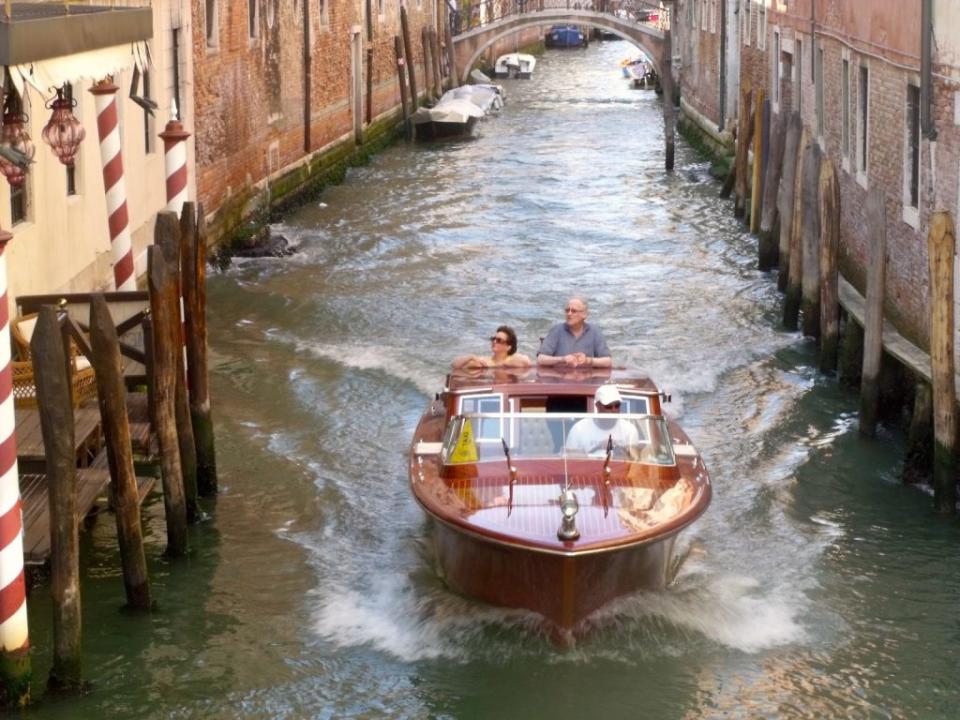
Don’t mind Venice transportation that’s heavy on your pocket?
Hop into a motorized water taxi, let your hair flutter in the salty wind, and enjoy the jet set feel. It’s convenient, fast, and offers privacy. But, unfortunately, short in-town boat rides cost between a whopping €40 and €70 ($40.80 and $71.40). And a one-way trip to Burano’s lace stores will set you back €130 ($132.65).
There are no set prices for the water taxis in Venice. A trip from Marco Polo Airport to the city center can easily cost €100 ($102) while traveling from the train station to St. Mark’s Square costs between €50 ($51) and €70 ($71.40). Whether you can split the expense with travel partners or not, getting around in Venice has its price.
Gondolas: For the ultimate Venice experience
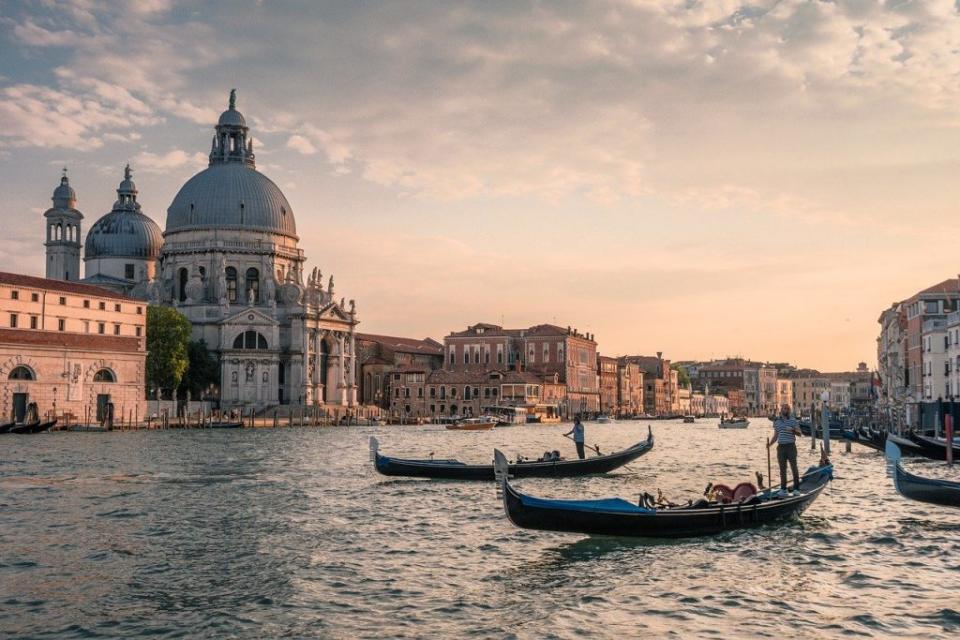
Gondolieri, wearing straw hats and clad in striped tees, calmly steer their narrow curved boats through winding canals using a long pole. Gondolas epitomize the charm of Venice. Many travelers think they haven’t experienced Venice to the fullest if they haven’t taken a gondola ride, and rightly so.
Formerly popular with affluent Venetians, now only with visitors, you’ll have to shell out for that once-in-a-lifetime experience, no question.
The going rate for a private 30-minute gondola trip in Venice is €80 ($81.60) and rises in time with the gondolier’s tunes. It pays to agree on a price before you step aboard. And if a private 30-minute ride at night sounds appealing, be prepared to stump up at least €120 ($122.50).
On Foot: Discover Venice the slow way
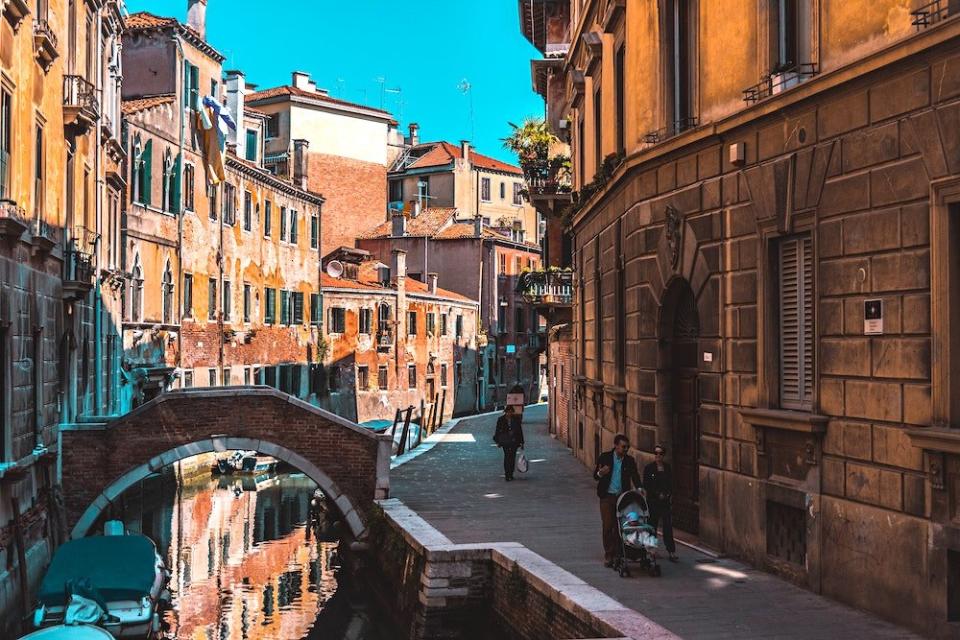
By and large, getting around Venice, Italy, is pretty straightforward.
It’s one of the country’s most pedestrian-friendly cities due to the absence of motorized vehicles on the streets. Also, the huge number of tourists makes the lagoon city look bigger than it actually is. Nevertheless, strolling on Venice’s narrow, cobbled alleys from one end to the other, navigating numerous dead ends, can take a while.
Walk across one of the famous bridges. It’s one of the things to do in Venice that many travelers consider a must. Romantic footbridges pop up around every bend, but only four of them straddle the Canale Grande.
Ponte di Rialto is the most famous of these four bridges, a 16th-century masterpiece embodying the Renaissance. It’s an ideal vantage point (read crowded) to see gondolas, plus smaller and larger boats cruise up and down the waterway.
Watching the world go by from Rialto Bridge is a highlight. And it’s also an excellent place to stock up on some souvenirs like the colorful, diamond-patterned Harlequin masks or Limoncello, the tasty Italian liqueur made of lemons mixed with syrup.
So, can you walk around Venice? Yes, absolutely. But rather than reading a map, or paying attention to street names that seem to be changing on a whim, watch out for landmarks. That way, you’ll avoid oozing buckets of sweat in summer, and holding gelato and souvenirs will be that much easier.
Where to go after Venice?
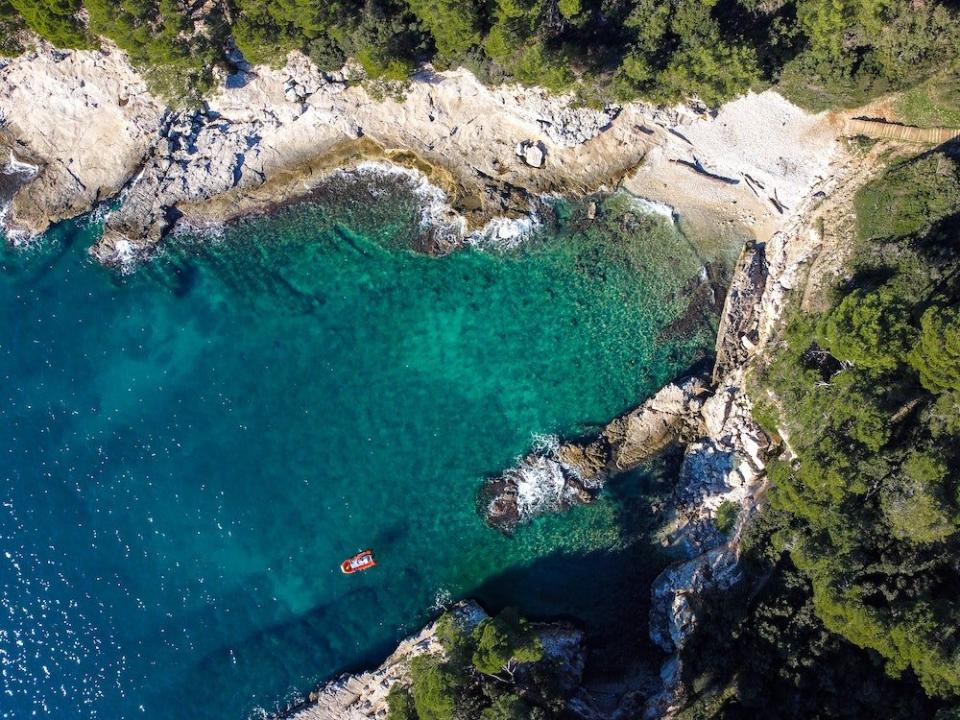
Complete with a well-preserved Roman amphitheater, shopping centers, and secluded beaches, Pula is a Roman wonderland in Istria, Croatia. It’s easily accessible via Venezia Lines’ catamaran ferry, which takes you from Venice to Pula in three-and-a-half hours.
A little further up on the Istrian coast is Poreč. This small Croatian town boasts Roman relics, a basilica featuring early Christian and Byzantine architecture, and intriguing mosaics. Poreč also has several beaches and offers good value for money. Venezia Lines’ High-Speed Ferry takes two hours and 45 minutes to get from Venice to Poreč.
FAQ
How many people can sit in the same gondola?
Gondolas are licensed for a maximum of six people.
What’s sitting in a gondola like?
Gondolas are like upscale vehicles. While a gondola’s typical color is black, most are ornately embellished and have comfortable seats and snugly blankets.
What’s the best way to get from the Marco Polo Airport (VCE) to Venice?
The best way to travel the 13kms is via ATVO express bus to Piazzale Roma (€8/$8.15). From there, hop on a vaporetto.
The post Getting Around in Venice: How to Navigate the City of Water appeared first on Bookaway.

